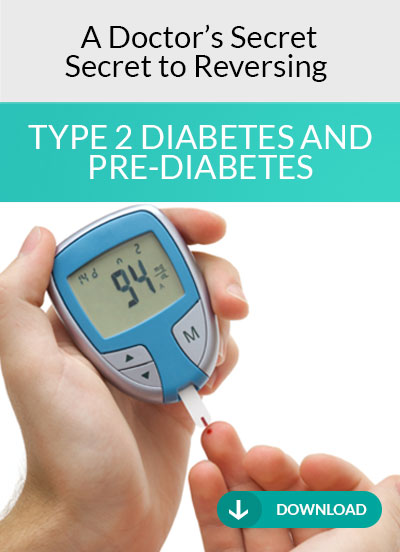Healthy Bread Alternatives: The Best Gluten-Free and Grain-Free Bread Recipes
Whether you’re on a gluten-free or grain-free diet, one of the hardest foods to give up is bread since it’s a staple in many different cuisines. In people on these types of diets, bread cravings are common. The good news? I’ve found that you don’t have to give up bread completely—you just need to find healthy bread alternatives.
Avoiding gluten and grains can be a gamechanger for people with autoimmune disease (as well as many other chronic illnesses), but it’s not always fun. Don’t worry: you can still have bread! This blog post will address what to look for in store-bought bread and give some options for people who can and can’t tolerate wheat. In addition, if you’re wondering “is sourdough bread better than whole wheat,” you’ll find that answer here. If you’re more interested in making your own bread, this blog also will provide you with a grain-free bread recipe and an easy way to make gluten-free sourdough.
What to Look for in a Store-Bought Bread
Before we talk about baking your own bread, let’s get into the issues with conventional bread. It’s over processed, often includes empty calories and chemical processing. Conventional store-bought breads give you quick energy, but they lack any real health benefits. Refining grains removes fiber, vitamins, and minerals and leaves a nutritionally empty product.
While removing healthy components, store-bought breads add not-so healthy components such as hidden sugars and chemical preservatives to enhance the taste and extend the shelf life. Those ingredients are inflammatory and cause blood sugar problems and affect our gut microbiome.
It’s better to choose healthy bread alternatives that are less processed and cleaner. Look for breads that have a minimal number of ingredients, especially those you can recognize. Also avoid refined and processed flours, added sugars, and preservatives. It’s also healthier to choose a bread with low-glycemic ingredients that’s high in fiber and protein to minimize its effect on your blood sugar. Keep reading to find out some specific brands that I like.
What’s Wrong with Store-Bought Gluten-Free Bread?
The problem isn’t always with wheat bread. Gluten-free breads can contain a lot of high-glycemic starches that can spike blood sugar and cause metabolic issues. Although a lot of people think they’re doing better by eating gluten-free, it’s not always healthy. You need to read the ingredients carefully. I go more into this issue in the blog post “Are Gluten-Free Diets Healthy?”
Is Sprouted Grain Bread Healthy?
If you’re able to tolerate gluten and wheat, sprouted breads are a healthy option for many people. Sprouting helps preserve some of the nutrients in the grain and is usually higher fiber. Sprouting also makes the grains easier to digest. As far as sprouted breads available at the store, people often ask me is Ezekiel bread actually healthy? And for those people who can tolerate wheat and gluten the answer is yes. The same is true for Dave’s Killer Sprouted bread. Those types of bread are healthier than conventional white bread but not ok if you react to wheat or gluten. Other sprouted wheat breads include Carbonaut, Simple Kneads, and Pacha.
Is Sourdough Bread Healthy?
Another option for people who can tolerate gluten or wheat is a traditional sourdough bread. It’s a better option compared to white bread or whole wheat. The difference between white bread and whole wheat bread is the way they’re processed. Each is made from wheat berry flour, but whole wheat contains all three of the primary components of wheat berry: the bran (the outer layers), the germ (the innermost area), and the endosperm (the starchy part in between). White bread is made from only the endosperm. Although whole wheat does have more fiber and nutrients like vitamins B6 and E, magnesium, zinc, folic acid and chromium, it’s still processed.
The fermentation that occurs with sourdough bread lowers the glycemic index and therefore stabilizes blood sugar. It’s also better for gut health. Fermenting the wheat digests the gluten protein and makes it more tolerable for most people. So for many people, the answer to the question, “Is sourdough bread healthier for you?” is yes.
However, for most of our practice members, and especially people with autoimmune diseases, it’s better to go gluten-free. For people with autoimmune issues, I recommend breads that are made out of nuts like almond flour, seeds, and coconut flour.
If you’re going to buy these gluten-free breads rather than bake them yourself, Base Culture makes a paleo sandwich bread as well as other types of gluten-free bread. Julian Bakery also makes grain-free breads.
Einkorn Flour and Gluten-Free Diets
Another thing that people want to know: is einkorn flour healthy? Einkorn is an ancient form of wheat that has never been hybridized. However, if your immune system reacts to wheat, it’s going to react to einkorn, too.
Your immune system looks at the protein structure of what you’re eating and since a food like einkorn contains a protein structure similar to that of conventional wheat you will react to that food as well. This is especially true for many of the people we work with at Caplan Health Institute who are chronically ill with autoimmune disease. If they react to wheat, we advise that they stay away from all forms of wheat, including einkorn.
How Much Bread Is Too Much?
Bread is delicious, but many of us eat way too much of it. In the United States, bread is eaten multiple times a day in the form of sandwiches, hamburger buns, or rolls. That doesn’t count pasta, pizza, pastries, and other forms. Whether it is gluten-free or not, eat bread as a treat, not as a dietary staple every day. Even gluten-free and grain-free flours are ultra-processed and can be harmful to someone with insulin resistance, metabolic syndrome, or imbalanced blood sugar when eaten in excess. Instead, fill your plate with whole-food colorful vegetables, fruits, fiber, lean meats, healthy fats, nuts, seeds, and greens.
To avoid eating too much bread at once and preserve it, I slice my loaf and I put little pieces of parchment paper between each slice so the slices don’t get stuck together and freeze the whole loaf. When I want a slice, I take it out of the freezer and toast it.
Baking Your Own Grain-Free and Gluten-Free Bread
The best way to ensure that you’re eating a healthy grain-free or gluten-free bread is to bake your own. That way you have complete control over the ingredients. I make a fiber bread with coconut flour, psyllium, and flax seed (see recipe below).
I also make a gluten-free sourdough bread (recipe also below). It was intimidating at first to make a sourdough gluten-free bread starter, but I got a kit online and it’s pretty simple. I make the gluten-free sourdough bread using sorghum, millet, arrowroot, and brown rice. Only use these ingredients if you know you can tolerate them. If you are not sure, you can find out by taking a food sensitivity test under the supervision of a functional medicine practitioner. There are many possible flour substitutions if you are sensitive.
Because the sourdough starter ferments the ingredients, it makes the bread a prebiotic that can feed the beneficial bacteria in your gut. The fermenting also lowers the glycemic impact, meaning it can stabilize your blood sugar.
Grain-Free and Gluten-Free Bread Recipes
Here are two recipes—a grain-free bread recipe and a gluten-free sourdough recipe—that make delicious homemade bread. They’re an ideal choice for people with autoimmune disease who are on a gluten-free or keto diet. I also recommend my blog post: “A Kitchen Essential For Every Grain-Free, Gluten-Free Autoimmune Diet: Buckwheat Sourdough.”
Healthy Fiber Bread
Ingredients:
One and a half cups almond flour
One-third cup psyllium husk powder
Half cup coconut flour
Half cup packed flax meal
2 teaspoons cream of tartar
1 teaspoon baking soda
1 teaspoon pink salt
6 large egg whites (approximately 8oz)
2 large whole eggs
2 cups boiling water
2 teaspoons apple cider vinegar
Directions:
- Preheat oven to 375 degrees F.
- Mix all dry ingredients together in bowl and set aside.
- Beat egg whites and cream of tartar until foamy/almost peaks.
- Add in whole eggs to egg whites.
- Intermittently add dry ingredients and hot water into eggs
until well incorporated.
- Add in apple cider vinegar.
- Prepare pan(s) using parchment paper or oil.
Buns (12 buns):
Bake 30-45 minutes until top is hard and toothpick inserted is clean.
Remove buns and cool on cooling rack.
Loaf Pan (makes 2 small loaves):
Bake 45-60 minutes until top is hard and toothpick inserted is clean.
Cool loaf in pan for about 10 minutes before removing and cooling on cooling
Gluten Free Sourdough Bread Recipe
Adapted from a recipe by Chantal at Fresh is Real
Prep Time: 30 minutes
Cook Time: ~1 hour
Total Time: ~ 24hrs overall
Yield: 1 loaf
This sourdough bread is delicious when enjoyed fresh and always amazingly tasty when
toasted. Start the process the day before you want to enjoy this bread. I highly recommend
you use a kitchen scale to measure ingredients.
You’ll also need:
- A Dutch oven
- Clean dish towel
- Bread-proofing basket
- Baking stone
Ingredients:
- 265g active brown rice sourdough starter (1 cup)
- 330g/ml room temp water (70-85°F) (plus 1–2 extra tbsps if necessary)
- 20g whole psyllium husk (4 tbsps)
- 20g pure honey (1.5 tbsps)
- 20g olive oil (1.5 tbsps)
- 80g either: buckwheat flour, millet or sorghum flour (scant 1 cup)
- 80g sorghum flour (scant 1 cup)
- 140g arrowroot starch (1 cup)
- 40g brown rice flour (1/4 cup)
- 8–10g sea salt (1/2 tbsp)
Instructions
Step 1
The day before baking, refresh (feed) your gluten-free sourdough starter.
- Schedule Example: Remove the starter jar from the fridge around dinnertime and
wait a few hours. I keep about 1 cup of starter in the jar when I refrigerate it between
bakes. Feed the starter before bedtime. It doesn’t have to be precise. Add a few
heaping spoonfuls of brown rice flour with enough water to stir.
- First thing in the morning, take a portion of the starter and feed it again to get it even
livelier. Do so by combining approximately 1/2 cup active starter 133g with 70g
brown rice flour and 62g water (mix & cover) and wait until it gets bubbly/active
again—usually a few hours. Or feed the starter a second time, right in the same jar,
using the previous measurements as a guide.
The goal is to create enough bubbly sourdough starter for the recipe (265g/1 cup). TIP: Feeding the starter more, right in the same jar is often faster.
Step 2
Combine the room temperature water (about 70-85°F), whole psyllium husk, honey, and
olive oil in a large mixing bowl (or stand mixer bowl) and whisk well. Set aside for 5 to 10
minutes. TIP: Touch your water. If it feels too cold, combine boiled and room temperature
water to create the desired temperature.
Step 3
In a separate bowl, combine, sift and mix all the remaining dry ingredients including the
sea salt.
Step 4
Add the dry ingredients from Step 3 and the gluten-free sourdough starter to the large mixing bowl with the psyllium gel. Mix with a spoon, hand(s), or stand mixer until the dough is well
combined. If it’s too dry, add one or two additional tablespoons of water if necessary. The
final dough texture should feel smooth, not dry and might be sticky. If the dough sticks to
your fingers (if mixing by hand), that’s ok! Scrape them down and wash them once finished.
Step 5
Dust a 7-inch banneton basket (bread-proofing basket) with a bit of brown rice flour to prevent sticking. Alternatively, place a clean dishtowel into a soup bowl and dust the towel with flour. Gather the dough in your hands and smooth it out by patting it to fix any imperfections. Place the
smoothest side down into the basket (it will become the top once flipped over to bake).
Insert the dough basket in a large plastic bag or cover with a clean dishtowel.
Find a cozy spot in the kitchen and let it rise for 3 to 5 hours. (I set mine in the oven turned
off but with the light on). The dough will not double in size but should spring back if gently
pressed down with a finger. After letting rise on counter/oven for 3-5 hours, place in
refrigerator overnight or for at least 12 hours (the longer it proofs the more “sour” it gets).
Step 6
One hour before baking the sourdough, preheat the oven and Dutch Oven to 425°F.
Position the oven rack on the lower half so the Dutch oven will be centered when baking. If
you have a baking stone/steel, you can leave it in the oven as well. (I recommend having a
baking stone or sheet under the Dutch Oven to prevent bottom of bread burning).
Step 7
Once the oven is hot, remove the Dutch oven from the oven. Be careful—it will be hot!
Gently flip the dough boule (a French word that means a round loaf of bread) onto a piece of parchment paper. Brush off excess flour. Score the dough with one line across holding the blade on a slight angle, about 1/4-in deep. Or try a design.
Transfer the dough with the parchment paper to the Dutch oven and close the lid. Bake for
40 minutes covered and approximately 25 minutes uncovered. The bread is ready when it’s
darker in color; the crust is hard and sounds hollow all around when tapped. The internal
temperature should be about 210°F, although I haven’t checked a loaf this way yet.
Step 8
Remove the boule from the Dutch oven and cool on a rack for at least 4 to 6 hours before
slicing. Don’t worry the crust will soften as it cools. Enjoy fresh!
Ingredients to Avoid in Your Gluten-Free Bread Recipes
People who are living with an autoimmune disease often have to restrict certain foods for some time while they train the immune system to calm down and stop attacking the body. Gluten and grains are prime suspects. While it can dramatically improve your health, avoiding bread made with gluten and grains can leave you feeling deprived. At the Caplan Health Institute, we can help you find out the root causes of your autoimmune condition and design a diet that will work for your body, not against it. The first step is to schedule a free 15-minute discovery consultation, by phone or video.
If you decide to come on board as a practice member, we can order a food sensitivity test and develop a comprehensive approach to eating a healthy diet designed especially for autoimmune health. We call our patients practice members because they take an active role in their health. In addition, our Caplan Health Institute coaches also can work with you to make sure you’re sticking with the plan. You’ll have more energy and feel better than you have in years.





